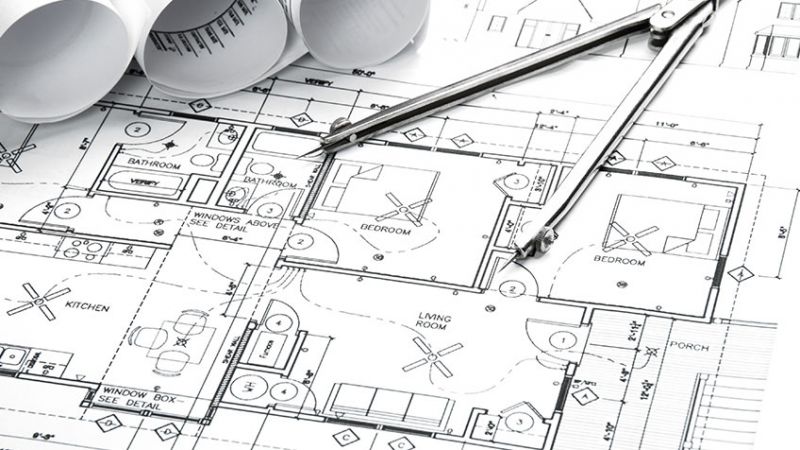
Adding a single storey extension to your home is one of the most popular and cost-effective ways to gain extra space without the hassle of moving house. Whether you're looking to create a larger kitchen-diner, a new home office, or simply open up your living space, a single storey extension can transform how you live in your home. But before grabbing the sledgehammer or hiring a builder, it's essential to understand whether you need planning permission for your extension — or if your project falls under what’s known as Permitted Development Rights in the UK.
This guide explains the key points about single storey house extensions, planning permission requirements, and everything you need to know about Permitted Development (PD) in England.
What Is Permitted Development?
Permitted Development Rights are a set of planning rules granted by the UK Government which allow homeowners to carry out certain types of work without needing to apply for full planning permission. These rights are particularly useful for straightforward home improvements like loft conversions, garage conversions, and yes, certain types of home extensions.
However, there are strict guidelines and limitations to ensure these developments don't negatively impact neighbours or the surrounding area. Just because Permitted Development means “no planning permission”, it doesn’t mean “no rules”. It’s important to check if your property qualifies and understand the exact criteria.
Permitted Development is most often available for houses, not flats or maisonettes. Also, if your home is in a conservation area, a National Park, or the Broads (among other designated areas), your PD rights may be restricted or removed entirely. If your house is listed, you’ll always need Listed Building Consent, and probably planning permission as well.
Despite the name, not everything is automatically “permitted” — that's why many homeowners seek a Lawful Development Certificate (LDC) from their local authority, to confirm their build is legal and within PD rights. This is highly recommended, especially if you plan to sell your home in the future.
When Is Planning Permission Not Required for a Single Storey Extension?
If you stick within Permitted Development guidelines, you can usually build a single storey extension without applying for full planning permission. Here are the general PD restrictions for single storey rear extensions in England:
- Height: Must not exceed 4 metres in height.
- Length: For attached houses (terraced or semi-detached), the extension must not extend beyond the rear wall of the original house by more than 3 metres. For detached houses, this is up to 4 metres.
- Width: Must not exceed more than half the width of the original house.
- Materials: The materials used must be similar in appearance to the existing house.
- Position: Extensions must not extend beyond the principal (front) elevation, and side extensions have different rules.
There was previously a "larger home extension" scheme under temporary rules, allowing up to 6 metres (for attached homes) or 8 metres (for detached) via a Neighbour Consultation Scheme. Good news: this was made permanent in 2020 in England, but it comes with extra checks and documentation.
Under the Neighbour Consultation Scheme, you must notify your local planning authority, who then contacts your neighbours. If no major objections are raised, you may progress under permitted development — this is not quite planning permission but not entirely automatic either.
What If My Design Doesn’t Meet Permitted Development Rules?
If your design breaks any of the above rules — for example, going higher than 4 metres, using different materials, or extending beyond the allowed limits — you’ll need to apply for householder planning permission from your local council. This involves submitting drawings, a design and access statement, and paying a planning fee.
The planning process generally takes 8-12 weeks, and involves a public consultation. It’s highly recommended to work with an architect or designer familiar with local planning policy to boost your chances of approval.
Reasons for refusal might include overshadowing a neighbour’s property, overlooking, or conflicting with your area’s Local Development Framework. All of which highlight the importance of careful design and professional advice.
Understanding the Technical Requirements: A Quick Reference Table
Here’s a handy summary of permitted development rules for a single storey rear extension:
| Criteria | Requirement Under Permitted Development |
|---|---|
| Max depth (terraced/semi) | 3 metres |
| Max depth (detached) | 4 metres |
| Max height | 4 metres |
| Materials | Similar materials to the existing house |
| Rear extension only? | Yes, front extensions require planning permission |
| Side extension | Permitted if single storey, width max 50% of original house |
| Neighbour consultation required? | Yes, if extending deeper than 3m (attached) or 4m (detached) |
| Listed building | Planning and listed building consent ALWAYS required |
What Is a Lawful Development Certificate (LDC)?
Even if your extension is clearly within Permitted Development rights, it’s a smart move to apply for a Lawful Development Certificate (LDC). This document from your local planning authority confirms that your extension was legal at the time it was built and falls within planning exemptions.
This certificate can save you headaches when it comes time to sell or remortgage, as buyers or lenders may request proof that your extension was built lawfully. It’s also useful protection should legislation change in the future.
Applying for an LDC is relatively straightforward compared to full planning permission. You’ll need to submit architectural drawings, supporting evidence, and pay a fee — but the process is faster and gives peace of mind.
Key Considerations Before You Build
While Permitted Development gives you more freedom, it’s not a license to start building without due diligence. Be sure to consider:
- Party Wall Agreements: If your extension involves work on or near a shared boundary, you may need a Party Wall Agreement with your neighbour.
- Building Regulations Approval: Separate from planning, this approval ensures your extension meets safety and structural standards.
- Impact on Neighbours: Even with PD rights, thoughtful design can help avoid disputes and objections.
- Utility Connections: Plan for plumbing, electrics, drainage, and heating early in the design process.
- Access and Maintenance: Make sure you can maintain your extension and avoid creating awkward spaces.
A great design respects both the law and the lives of those nearby — whether that’s through clever use of skylights to reduce overlooking, or keeping noise-sensitive rooms away from party walls.
Conclusion: Do You Need Planning Permission?
In many cases, you won’t need full planning permission for a single storey extension, thanks to Permitted Development Rights. However, each project is unique, and it’s essential to understand the rules and how they apply to your specific property.
For homeowners, young professionals, and DIY enthusiasts, this avenue offers flexibility and an opportunity to enhance your home with fewer hurdles. For architects and tradespeople, understanding when and where PD applies can streamline your service and add value to your clients’ projects.
When in doubt, speak to a qualified architectural professional or planning consultant — and never underestimate the power of clear, proactive planning. Your dream home extension could be more within reach than you think.

